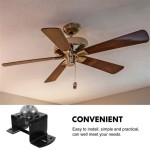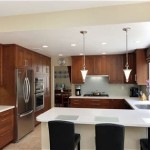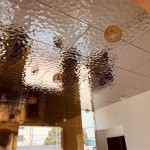When Did Drop Ceilings Become Popular?
Drop ceilings, also known as suspended ceilings, have become a ubiquitous feature in commercial and residential spaces. Their popularity stems from a confluence of factors, including practicality, aesthetics, and evolving building technologies. Pinpointing the exact moment they became popular requires examining their historical development and the shifting demands of construction throughout the 20th century.
The precursor to the modern drop ceiling can be traced back to the late 19th century. Elaborate plaster ceilings, while visually appealing, presented challenges in terms of cost, maintenance, and concealing building infrastructure. As buildings became taller and more complex, the need for a more manageable ceiling solution became apparent. Early attempts involved suspending fabric or canvas below the structural ceiling, primarily to improve acoustics and thermal insulation.
The post-World War II era marked a significant turning point in the development of drop ceilings. The booming construction industry, fueled by suburban expansion and a growing economy, demanded efficient and cost-effective building materials. Manufacturers began experimenting with lightweight, modular ceiling tiles made from materials like mineral fiber, fiberglass, and metal.
The 1950s witnessed the rise of the "acoustic tile," a key driver in the popularization of drop ceilings. These tiles effectively absorbed sound, creating quieter and more comfortable environments in offices, schools, and hospitals. This acoustic performance was particularly valued in open-plan offices, a design trend that gained traction during this period.
The introduction of the T-bar grid system further enhanced the practicality of drop ceilings. The grid provided a standardized framework for supporting the ceiling tiles, simplifying installation and allowing easy access to the plenum space above. This facilitated the integration of electrical wiring, plumbing, and HVAC systems, streamlining building construction and maintenance.
Throughout the 1960s and 1970s, drop ceilings became increasingly common in commercial buildings. Their affordability, ease of installation, and ability to conceal unsightly building components made them a practical choice for a wide range of applications. The burgeoning popularity of fluorescent lighting also contributed to the adoption of drop ceilings, as the grid system provided a convenient structure for mounting light fixtures.
While initially favored primarily for commercial settings, drop ceilings gradually made their way into residential applications. The rise of the ranch-style home in the mid-20th century, with its characteristic low ceilings, presented an opportunity to incorporate drop ceilings for aesthetic and practical reasons. They offered a way to create a more polished look while concealing ductwork and other utilities.
The versatility of drop ceilings further solidified their popularity. Manufacturers began offering a wider variety of tile designs, textures, and finishes, allowing for greater flexibility in interior design. Options ranged from basic textured tiles to more elaborate designs that mimicked the appearance of traditional plaster ceilings.
Advancements in materials and manufacturing techniques continued to drive the evolution of drop ceilings. Improved fire resistance, humidity control, and light reflectance properties enhanced their performance and broadened their applications.
The development of integrated lighting systems further enhanced the functionality of drop ceilings. Recessed lighting fixtures designed specifically for drop ceilings offered a seamless and aesthetically pleasing way to illuminate spaces. The integration of other building systems, such as air ventilation and sprinkler systems, became increasingly common.
While drop ceilings remain a popular choice, evolving design trends have impacted their usage. The exposed ceiling aesthetic, popularized in industrial and loft-style spaces, has led to a decline in drop ceiling installations in some settings. However, the inherent advantages of drop ceilings—accessibility, acoustic control, and cost-effectiveness—continue to make them a relevant and practical solution for many building applications.
The development of newer materials and design options further ensures the continued relevance of drop ceilings in contemporary architecture. Tiles made from recycled materials, offering improved sustainability, have become increasingly popular. Enhanced acoustic performance, addressing the needs of open-plan offices and other noise-sensitive environments, also remains a focus of innovation in the drop ceiling industry.
The history of the drop ceiling reveals a dynamic interplay between evolving building technologies and shifting design preferences. From their humble beginnings as functional coverings to their widespread adoption in commercial and residential spaces, drop ceilings have adapted to meet the changing demands of the built environment.

Dropped Ceiling Wikipedia
Why Do Commercial Buildings Have Drop Ceilings
How To Soundproof A Drop Ceiling Second Skin Audio

Dropped Suspended Grid Ceiling Design Ideas Advantages Disadvantages
Why Do Commercial Buildings Have Drop Ceilings

Dropped Suspended Grid Ceiling Design Ideas Advantages Disadvantages

Pros And Cons Of Having A Drop Ceiling With Commercial Tiles In The Office Decorative Inc

Dropped Suspended Grid Ceiling Design Ideas Advantages Disadvantages

Drop Ceiling Vs Drywall In Basement Which Is Best Millennial Homeowner February 2024

Diy Coffered Ceilings With Moveable Panels Renovation Semi Pros
Related Posts








